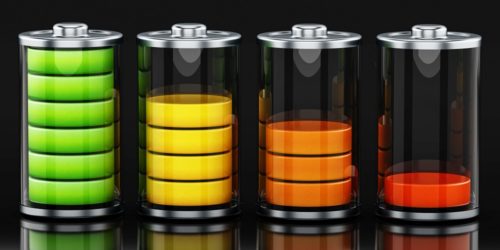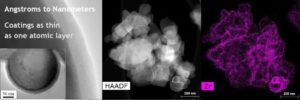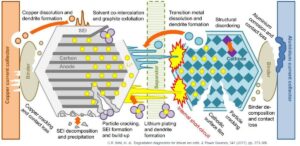
Introduction
When batteries are stored and when they are used, unwanted reactions occur inside the battery leading to degradation of performance. Many of these unwanted reactions, such as transition metal dissolution, lithium inventory loss, and solid electrolyte interphase (SEI) growth, can be slowed or passivated by surface coatings. The Atomic Layer Deposition (ALD) process provides the best performing, most precise, reproducible, scalable, and cost-effective coating process to reduce unwanted reactions and enhance the performance of batteries. ALD can be applied to a wide variety of cathode and anode powders to produce benefits including longer cycle life, lower gas generation, slower impedance growth, and higher voltage utilization. Currently, multiple companies are optimizing ALD coatings for their specific electrode powders and batteries with the use of high throughput ALD systems that can process 3.000 kg – 30.000 kg of powder per day (~10,000 tons per year per system) with high cost efficiency.
ALD Improves Battery Materials
ALD coatings stabilize materials from the surface. ALD coatings on anode and cathode powders improve battery performance. The stabilizing nature of ALD coatings reduce metal dissolution, reduce SEI formation, and reduce lithium inventory loss. These effects can lead to the following benefits, depending on the application:
- Higher voltage operation (and associated higher capacity)
- Longer calendar lifetime
- Longer cycle life
- Less gas generation
- Lower impedance growth over cycling, leading to higher capacity after cycling
- Enhanced safety (higher thermal runaway onset temperature, ARC measurement, etc.)
Atomic Layer Deposition (ALD)
- Applies a thin atomic layer coating to powders and objects
- Enhances surface properties to unloack full potential of materials

Such benefits have been observed on the following materials:
Cathode powders:
NCM (>80%Ni, 811, 721, 622, 532), LCO (at 4.5V, 4.6V), NCA (>80%Ni, >90%Ni), LMO (spinel and non-spinel types) and LMNO
Anode powders:
Natural graphite, synthetic graphite, Si/C composites and silicon.
For coatings on cathode powders, the higher the nickel (Ni) concentration, the less stable the cathode materials and the more important the surface coating. For high Ni materials, ALD coatings provide the most benefit versus other coating methods.

For coatings on anode powders, even just a very thin (less than a nanometer) ALD coating can provide significantly enhanced cell cycle lifetimes and higher voltage performance. When combining a coated cathode with a coated anode, even more benefits can be observed for certain systems such as LCO/graphite systems. These benefits include higher initial specific discharge capacities and higher capacity retention over cycle life.

Learn More?
Please click on ‘Request Application Note’ and we will send you the full application note ‘Improve Lithium Ion Battery Cathodes and Anodes by Particle Atomic Layer Deposition (PALD)’.
